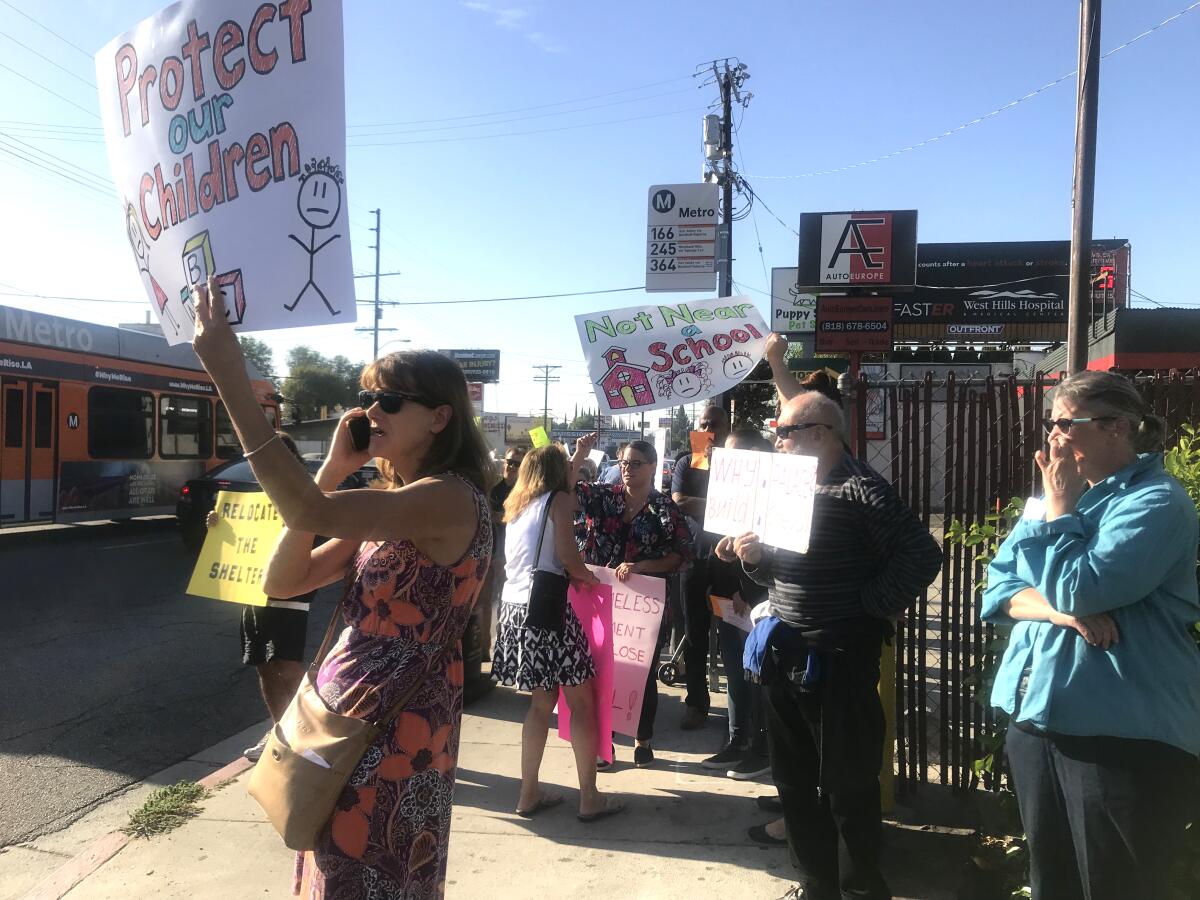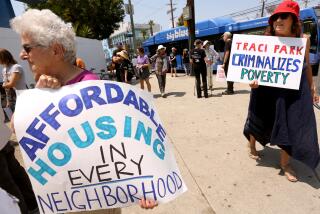Letters to the Editor: Build housing for homeless people, but only in sparsely populated areas

- Share via
To the editor: There has been yet another protest against against establishing temporary housing for homeless people, this one in Chatsworth. It seems that no matter which community is proposed for a housing project, the residents of that area protest.
Why don’t our political leaders get it? When the voters approved a measure to tax themselves and provide a huge amount of money to provide housing for homeless people, they did not vote to put that housing in their backyards.
There exists ample space for such housing outside highly populated residential neighborhoods.
Gene Pomerantz, Marina del Rey
..
To the editor: Seeing Sandy Banks’ byline in the paper, my first thought was, “Oh, how wonderful to see her writing a once-in-a-great-while article.”
But lo and behold, I read at the end of her piece that she’s coming back to us -- and every other week is truly something to look forward to.
Welcome home, Sandy!
Kristene Wallis, Valley Village
..
To the editor: An article in the L.A. Times points out that while the Los Angeles Homeless Services Authority reported that 29% of the unsheltered adult population had either a mental illness or substance abuse disorder, the paper’s own analysis of the same data suggests that 67% had either a mental illness or substance use disorder.
Why the discrepancy?
LASHA, helped by our team at USC, reported the number based on people who self-reported having a “permanent or long-term” condition. The Times, on the other hand, refers to people with a lifetime prevalence of any mental illness or substance abuse.
One would expect the latter to be substantially higher than the former. Studies have estimated that the lifetime prevalence of any mental illness in the U.S. is around 50% of the population, whereas fewer than 20% have experienced any mental illness in the past year.
The best way to determine what proportion of homeless people are mentally ill is to revise the annual homeless count survey to better differentiate between current and lifetime prevalence for specific conditions. LASHA has already embarked on this task.
Benjamin Henwood and Patricia St. Clair, Los Angeles
Henwood was the USC homeless count lead and is an associate professor of social work at USC; St. Clair is a USC senior data analyst who worked on the homeless count.
More to Read
A cure for the common opinion
Get thought-provoking perspectives with our weekly newsletter.
You may occasionally receive promotional content from the Los Angeles Times.






